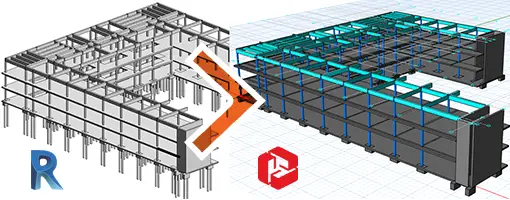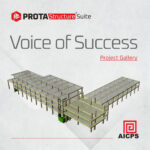
Revit Integration Guide
Summary
ProtaStructure Integration with Autodesk Revit
ProtaStructure provides seamless bi-directional integration with Autodesk Revit, enabling smooth collaboration between structural and architectural models. This document explains the Revit integration process, detailing how to transfer models efficiently. By synchronizing data and improving workflows, this integration empowers engineers and architects to work together more effectively.
Key Features of ProtaStructure-Revit Integration
- Smooth Data Transfer: Engineers can easily transfer structural models from ProtaStructure to Revit without losing data, ensuring both accuracy and compatibility.
- Bi-Directional Workflow: Furthermore, changes made in one platform are quickly synchronized with the other, maintaining consistency throughout the design process.
- Detailed Model Representation: In addition, beams, columns, slabs, and reinforcement details transfer seamlessly into Revit, allowing for detailed visualization and documentation.
- Enhanced Collaboration: Consequently, real-time updates between platforms improve communication among teams, helping to reduce errors and save time.
Steps for Transferring Models
To successfully transfer models between ProtaStructure and Revit, follow these steps:
- Finalize all structural elements in the ProtaStructure model.
- Next, export the model using the ProtaStructure-Revit link in the correct format.
- Then, import the model into Revit and verify that all elements align as expected.
- Finally, synchronize modifications between the platforms to maintain consistency.
Real-World Applications
ProtaStructure’s Revit integration has been successfully applied in numerous real-world projects.
- Explore Real Projects: Browse our Projects Gallery to see ProtaStructure in action.
- Customer Success Stories: Additionally, discover customer success stories showcasing how engineers use this integration to streamline workflows.
Conclusion
In conclusion, the ProtaStructure-Revit integration enhances collaboration between structural and architectural teams by automating data transfer and synchronization. This streamlined process ensures accurate, coordinated designs, enabling engineers to deliver high-quality results efficiently.







